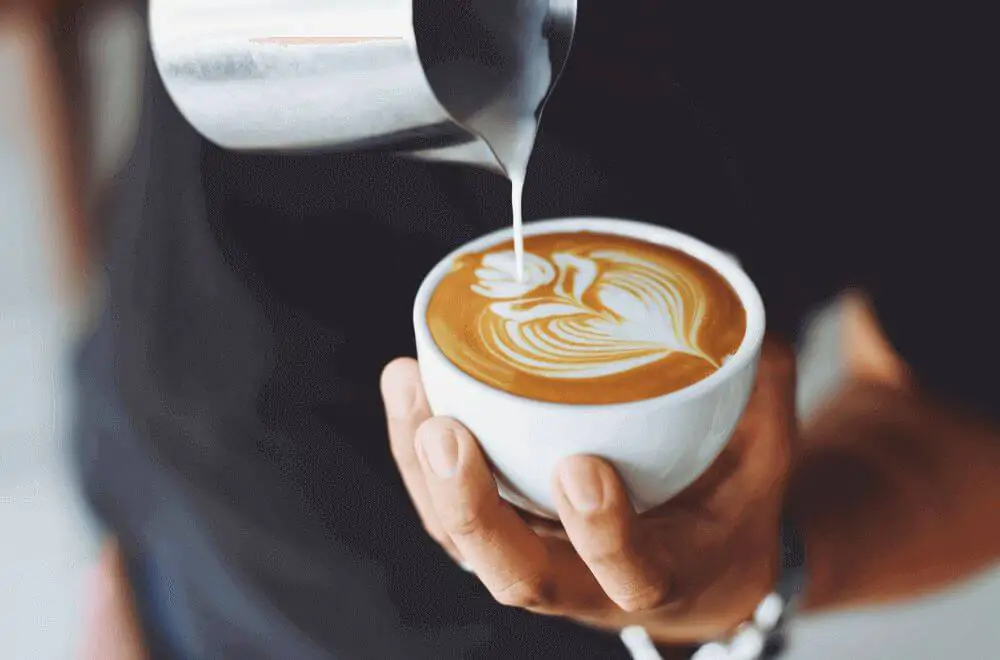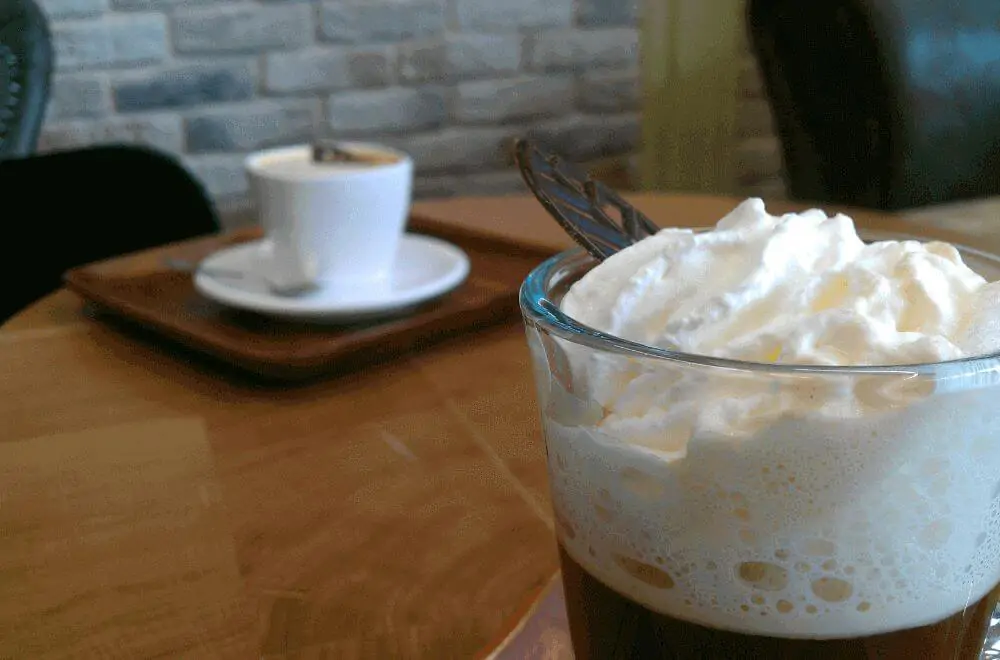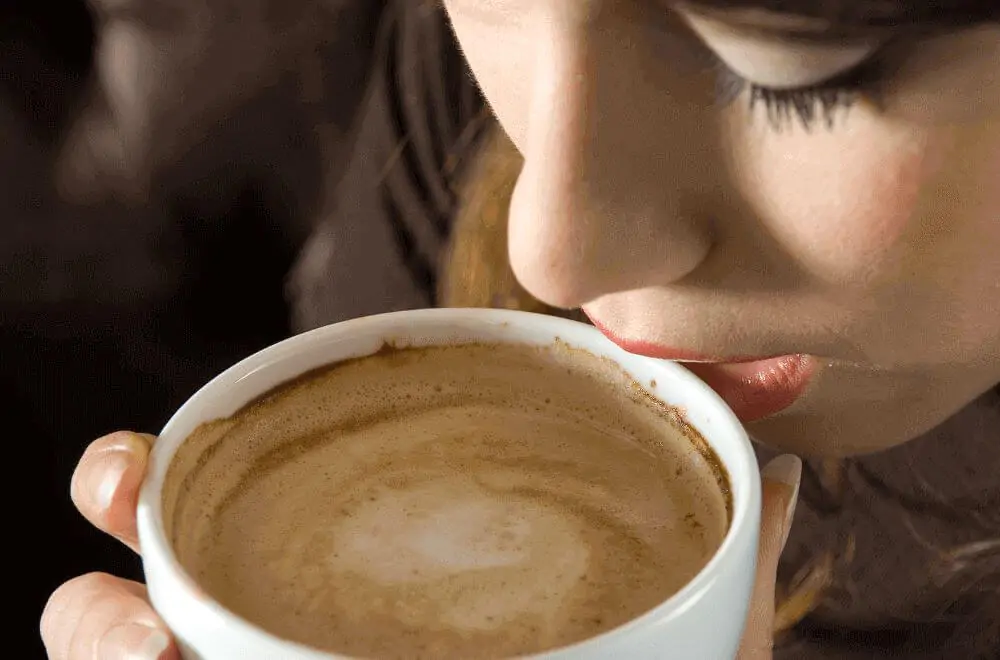As more coffee shops list calorie contents, you might wonder, why is a cappuccino high in calories? Much of this is the milk content and additional flavorings.

For a long time, I used to drink energy drinks to help me wake up in the morning. However, doing so was adding too much sugar into my diet, so I decided to switch to coffee. However, even though a cup of coffee is demonstrably healthier than a carbonated energy drink, I wasn’t feeling any better.
Then, I did some research to learn how many calories are in a cappuccino. I discovered that a cappuccino is high in calories because of the milk and sugar added to it. This is true of many other types of coffee, including lattes, mochas, and many other specialty drinks.
So, let’s break down why cappuccinos are high in calories and what you can do about it.
A Brief History Of The Cappuccino
The cappuccino that we all know and love today started off a bit differently when it was invented in the 18th century. Back then, coffee houses were widely popular and acted as cultural hubs. There, individuals could meet and discuss ideas while hanging out and drinking coffee all day, even more so than in modern times.
The first type of cappuccino was served in Viennese coffee houses, but the name was Kapuziner (pronounced kah-poo-chin-er), and it referred to the kapuzin friars that wandered around the city. Since these friars wore brown, hooded robes and the coffee resembled their robe color, the name stuck. In Italy, these friars were called capuchin, thanks to the hoods over their heads.

Recipes from this time also offer vague tips, saying that a kapuziner beverage is “coffee with cream and sugar and, sometimes, spices.” These recipes date back to the early 1800s, although this coffee variation had already been around for almost 100 years.
It wasn’t until the early 1900s, when espresso machines were invented that the modern version of the cappuccino was born in Italy. Since these machines were tricky to use, they had to be manned by “baristi,” meaning that cappuccinos were popular in upscale cafés and coffee shops—the first records of a modern cappuccino date back to the mid-1930s.
After World War II, espresso machines were much more streamlined, meaning the cappuccino could spread around the world. During this era, all the hallmarks of the beverage came together, including frothed and steamed milk, a pre-heated mug, and freshly prepared espresso. By the 1980s, cappuccinos became popular in the United States, where they have enjoyed mainstay status alongside other coffee varieties like mocha, latte, espresso, and macchiato.
How A Cappuccino Is Made
A modern cappuccino requires three primary ingredients: espresso coffee, frothed milk (aka foam), and steamed milk. That said, some coffee shops will upgrade their cappuccinos to include other flavors like caramel, chocolate, or vanilla.
Modern varieties may also include non-dairy milk, such as almond milk, cashew milk, or soy milk. You might also enjoy our explainer on what is an iced cappuccino. The steps to prepare a cappuccino are as follows:
Step 1: Steam The Milk
Put milk in a saucepan and warm it until it starts bubbling around the edges. Then, remove the pan from the heat and set it aside.
Step 2: Froth The Half Milk
You can use a milk frother or a handheld mixer. Whip the milk until you get the desired consistency of your foam. The type of milk you use matters, as whole milk creates thicker foam, while non-dairy options are thinner and harder to make.
Step 3: Make Your Espresso
If you have an espresso machine, you can prepare whichever variety you prefer.
Step 4: Mix
Add the remaining steamed milk to your coffee, and then pour the foam on top, so it sits above everything else. There is a 1:1:1 ratio for the espresso, steamed milk, and foam.
Step 5: Add a Garnish (Optional)
Some people prefer chocolate shavings, cocoa powder, or cinnamon on top of the foam. You can add whichever garnish you like.
Which Elements In A Cappuccino Have The Most Calories?
When you break down the contents of a modern cappuccino, it’s easy to see which components add the most calories.
First of all, the type of milk you use affects not only your foam but your calorie intake. Whole milk has more fat and calories, so it makes the beverage more fattening. While you can switch to low-fat or skim milk, it will be harder to create foam because there are no fats and lipids to create bonds between the bubbles.
Second, if you use any sweeteners or added sugar, you’ll make a high-calorie cappuccino. For example, some people like to add whipped cream instead of froth, but that adds a lot of sugar and carbohydrates. Plus, if you add any type of garnish on top (i.e., chocolate flakes), that will increase the number of calories.
The component that adds the least calories, fat, and sugar is the espresso. It’s only when you add sugar, creamer, and other additives that traditional coffee can become unhealthy. Learn how many calories are in a cup of coffee.
Average Calorie Count For A Cappuccino
Compared to other coffee drinks, cappuccinos are actually not that bad for you (provided you use healthier, low-calorie ingredients). A single cup contains:
- Calories: 60
- Total Fat: 2.3 grams
- Sugar: 5.8 grams
- Carb: 6 grams
- Cholesterol: 9.2 mg
By comparison, a latte has 94.5 calories, with 3.7 grams of fat and 9.5 grams of sugar. So, if you’re trying to drink coffee for its health benefits, a cappuccino is better than other high-calorie options like lattes. You might also be interested in our latte macchiato vs. cappuccino guide.
How To Reduce The Calories
Although cappuccinos are not super high in calories, you can take steps to make them healthier and low-fat. Here are a few options to help you feel better about drinking cappuccinos daily (or multiple times per week).

- Make your own: While going to Starbucks or another coffee house is convenient, you can’t control the ingredients they use. If you have a home coffee setup, you can make sure everything from the shot of espresso to the foam is healthier for you.
- Use milk alternatives: Most people turn to soy or almond milk, but there are plenty of other varieties, including coconut milk, rice milk, and more. While non-dairy alternatives are hard to use for froth, you can use them for steaming and full cream milk for frothing.
- Avoid unnecessary add-ons: While flavored syrup or sweeteners can enhance the flavor of your coffee, they’ll add extra calories to your beverage.
- Reduce or adjust your serving size: You can either have less than a full eight-ounce cup of coffee, or you can increase the amount of espresso and use less milk.
Cappuccino Vs. Other Coffee Drinks
To help you get a sense of how a cappuccino compares to other types of coffee, here’s a breakdown of calorie, fat, and sugar counts for five different coffees:
- Cappuccino: 60 calories, 2.3 grams of fat, 5.8 grams of sugar
- Latte: 94.5 calories, 3.7 grams of fat, 9.5 grams of sugar
- Mocha: 180 calories, 6.6 grams of fat, 11 grams of sugar
- Macchiato: 110 calories, 5.7 grams of fat, 8.8 grams of sugar
- Espresso or black coffee: 13 calories, 0.2 grams of fat, 0 grams of sugar
FAQs About Why is a Cappuccino High in Calories
Are Cappuccinos Healthy?
When compared to other types of coffee, cappuccinos are relatively healthy. However, if you’re using high-fat milk and other sweeteners, you counteract a lot of the natural health benefits of drinking coffee.
Will You Gain Weight If You Drink A Lot Of Cappuccinos?
If you only drink a lot of cappuccinos and don’t change anything else about your diet, you may put on some weight. However, if you incorporate coffee into a relatively healthy diet, you shouldn’t gain weight from drinking coffee drinks like cappuccinos.
Will You Become Diabetic If You Drink A Lot Of Cappuccinos?
Type 2 diabetes is becoming a far more common disease, thanks in large part to a diet heavy in sugar and fat. However, cappuccinos don’t add too much sugar to your diet, so drinking them shouldn’t contribute to your diabetes risk. Consult your doctor if you’re concerned.

